Hartmut Lehfeld
Infusing Acoustic Pause Context into Text-Based Dementia Assessment
Aug 27, 2024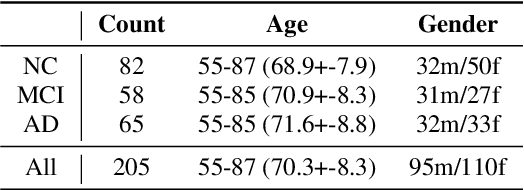

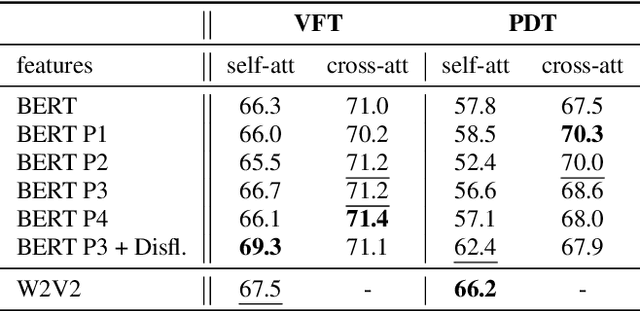
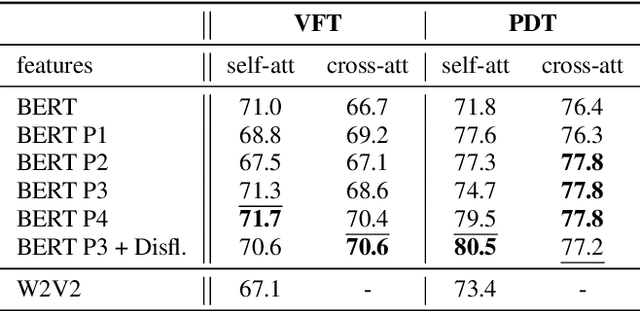
Abstract:Speech pauses, alongside content and structure, offer a valuable and non-invasive biomarker for detecting dementia. This work investigates the use of pause-enriched transcripts in transformer-based language models to differentiate the cognitive states of subjects with no cognitive impairment, mild cognitive impairment, and Alzheimer's dementia based on their speech from a clinical assessment. We address three binary classification tasks: Onset, monitoring, and dementia exclusion. The performance is evaluated through experiments on a German Verbal Fluency Test and a Picture Description Test, comparing the model's effectiveness across different speech production contexts. Starting from a textual baseline, we investigate the effect of incorporation of pause information and acoustic context. We show the test should be chosen depending on the task, and similarly, lexical pause information and acoustic cross-attention contribute differently.
Classifying Dementia in the Presence of Depression: A Cross-Corpus Study
Aug 16, 2023Abstract:Automated dementia screening enables early detection and intervention, reducing costs to healthcare systems and increasing quality of life for those affected. Depression has shared symptoms with dementia, adding complexity to diagnoses. The research focus so far has been on binary classification of dementia (DEM) and healthy controls (HC) using speech from picture description tests from a single dataset. In this work, we apply established baseline systems to discriminate cognitive impairment in speech from the semantic Verbal Fluency Test and the Boston Naming Test using text, audio and emotion embeddings in a 3-class classification problem (HC vs. MCI vs. DEM). We perform cross-corpus and mixed-corpus experiments on two independently recorded German datasets to investigate generalization to larger populations and different recording conditions. In a detailed error analysis, we look at depression as a secondary diagnosis to understand what our classifiers actually learn.
Automated Evaluation of Standardized Dementia Screening Tests
Jun 13, 2022
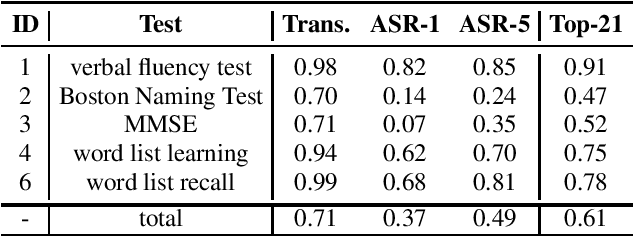
Abstract:For dementia screening and monitoring, standardized tests play a key role in clinical routine since they aim at minimizing subjectivity by measuring performance on a variety of cognitive tasks. In this paper, we report on a study that consists of a semi-standardized history taking followed by two standardized neuropsychological tests, namely the SKT and the CERAD-NB. The tests include basic tasks such as naming objects, learning word lists, but also widely used tools such as the MMSE. Most of the tasks are performed verbally and should thus be suitable for automated scoring based on transcripts. For the first batch of 30 patients, we analyze the correlation between expert manual evaluations and automatic evaluations based on manual and automatic transcriptions. For both SKT and CERAD-NB, we observe high to perfect correlations using manual transcripts; for certain tasks with lower correlation, the automatic scoring is stricter than the human reference since it is limited to the audio. Using automatic transcriptions, correlations drop as expected and are related to recognition accuracy; however, we still observe high correlations of up to 0.98 (SKT) and 0.85 (CERAD-NB). We show that using word alternatives helps to mitigate recognition errors and subsequently improves correlation with expert scores.
Going Beyond the Cookie Theft Picture Test: Detecting Cognitive Impairments using Acoustic Features
Jun 10, 2022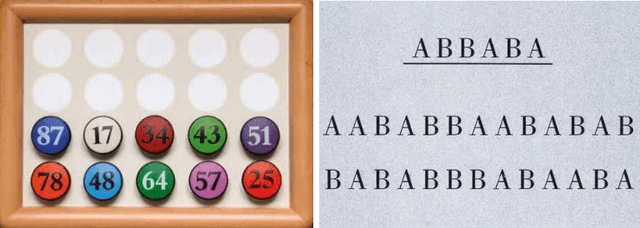

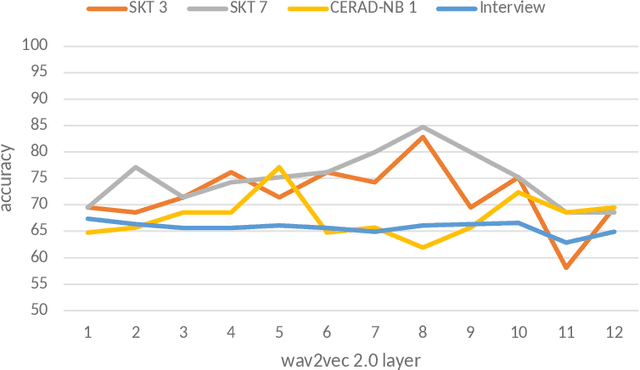
Abstract:Standardized tests play a crucial role in the detection of cognitive impairment. Previous work demonstrated that automatic detection of cognitive impairment is possible using audio data from a standardized picture description task. The presented study goes beyond that, evaluating our methods on data taken from two standardized neuropsychological tests, namely the German SKT and a German version of the CERAD-NB, and a semi-structured clinical interview between a patient and a psychologist. For the tests, we focus on speech recordings of three sub-tests: reading numbers (SKT 3), interference (SKT 7), and verbal fluency (CERAD-NB 1). We show that acoustic features from standardized tests can be used to reliably discriminate cognitively impaired individuals from non-impaired ones. Furthermore, we provide evidence that even features extracted from random speech samples of the interview can be a discriminator of cognitive impairment. In our baseline experiments, we use OpenSMILE features and Support Vector Machine classifiers. In an improved setup, we show that using wav2vec 2.0 features instead, we can achieve an accuracy of up to 85%.
 Add to Chrome
Add to Chrome Add to Firefox
Add to Firefox Add to Edge
Add to Edge